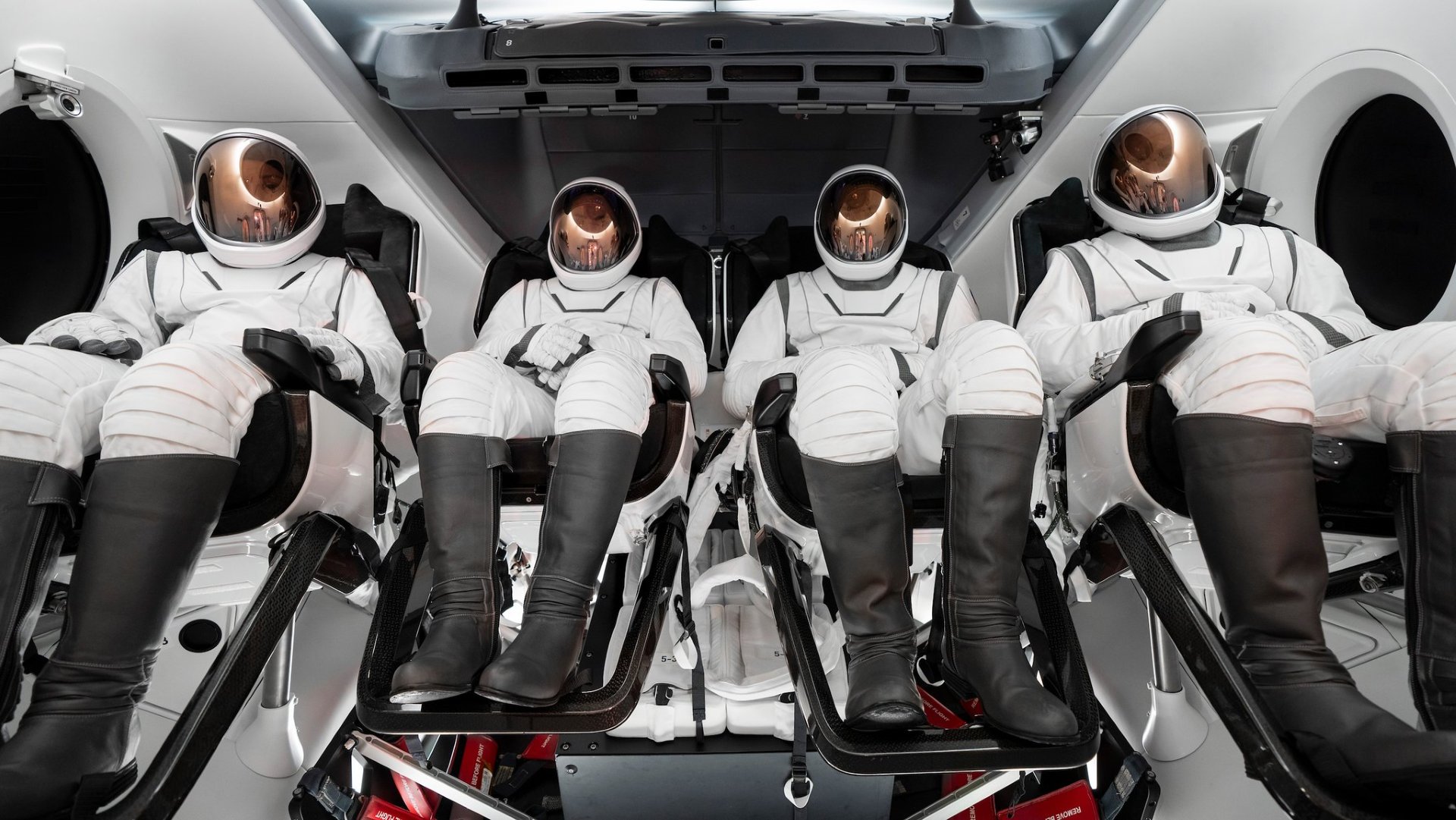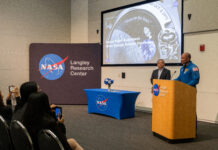NASA Utilizes Commercial Spaceflight for Groundbreaking Research on Human Health in Space
NASA researchers are set to gain valuable insights from a new series of experiments conducted aboard a fully-commercial human spaceflight mission. This initiative aims to enhance the agency’s scientific understanding as humanity prepares for future missions to the Moon, Mars, and further into space.
The experiments are part of the Polaris Dawn mission, which successfully launched earlier today aboard a SpaceX Dragon spacecraft and Falcon 9 rocket. The mission features a four-person crew, including Jared Isaacman, Scott “Kidd” Poteet, Sarah Gillis, and Anna Menon. These crew members will carry out various scientific studies, focusing particularly on health and human performance research, under NASA’s Human Research Program.
A Closer Look at Human Health in Space
One of the primary objectives of the Polaris Dawn mission is to investigate how space conditions affect the human body. The crew will test new medical techniques and technologies, including telemedicine capabilities, which could be crucial for future long-duration space missions. They will gather data on space motion sickness and assess the risks associated with flight-related injuries.
“Each mission, whether the crew consists of commercial or NASA astronauts, provides a crucial opportunity to expand our knowledge about how spaceflight impacts human health,” said Jancy McPhee, associate chief scientist for human research at NASA. “Information gathered from Polaris Dawn will give us critical insights to help NASA plan for deeper space travel to the Moon and Mars.”
Testing Advanced Medical Technology
One of the standout pieces of technology being tested is a commercial device capable of collecting and integrating various health measurements like blood pressure, heart rate, respiration rate, and temperature. This device also offers ultrasound imaging and video camera capabilities focused on the larynx and throat, along with an experimental telemedicine feature designed to help diagnose crew members in near-real time.
To validate this technology, crew members will compare its vital sign collection capabilities with data gathered from standard health status exams. They will also test the telemedicine feature using SpaceX’s Starlink communications system to connect with medical professionals on Earth. This simulation aims to see if the device can provide accurate diagnoses based on crew inputs and the available documentation.
“Crew members will need to be more self-reliant during lengthy missions, and we hope that telemedicine can provide crews with the necessary assistance,” McPhee added.
Addressing Space Motion Sickness
Another significant area of research involves understanding and mitigating space motion sickness, a common issue for astronauts. Crew members will document their symptoms, describe the interventions they used to alleviate these symptoms, and report on the effectiveness of these methods.
Studying Re-entry Injuries
NASA is also focused on understanding the potential injuries or discomforts that astronauts might experience during re-entry to Earth. A separate research project will survey the crew members post-mission to gather this data.
“Our team will take the crew’s survey data and combine it with information gathered from sensors on the spacecraft. This will allow us to link crews’ reported experiences and health outcomes with the spacecraft’s dynamics and landing loads,” said Preston Greenhalgh, an injury biomechanist at NASA who is leading this work.
Comprehensive Health Studies
In addition to the above research, the Polaris Dawn crew will participate in various health studies on behalf of the NASA-funded Translational Research Institute for Space Health (TRISH). This work will help set a new standard for collecting health data on commercial spaceflights, complementing the datasets routinely gathered from NASA astronauts.
The rigorous set of medical tests, both before, during, and after the mission, will include assessments of behavior, sleep, bone density, eye health, cognitive function, and other factors. The researchers will also analyze samples of blood, urine, and respiration to gain a comprehensive understanding of how spaceflight impacts human health.
“We’re so grateful to the crew members who volunteer to be part of NASA’s work. The insights that we gain from each study may trigger breakthroughs that will help ensure future mission success,” McPhee concluded.
NASA’s Ongoing Commitment to Human Spaceflight Research
NASA’s Human Research Program is dedicated to finding the best methods and technologies to support safe and productive human space travel. Through research conducted in laboratories, ground-based analogs, commercial missions, and the International Space Station, the program examines how spaceflight affects human bodies and behaviors. This research is pivotal to NASA’s mission of innovating ways to keep astronauts healthy and mission-ready as space exploration ventures further afield.
Good to Know Information
Understanding and addressing the challenges of human spaceflight is critical as NASA and other space agencies plan missions that will take astronauts deeper into space than ever before. For instance, the duration of a round-trip mission to Mars could be around 18 months, exposing astronauts to prolonged periods of microgravity and radiation. The data collected from missions like Polaris Dawn will be instrumental in developing countermeasures to ensure the health and safety of astronauts on such long-duration missions.
Reactions and Reviews
The space exploration community has widely welcomed the Polaris Dawn mission and its scientific objectives. Experts believe that the integration of commercial spaceflight into NASA’s research portfolio could accelerate the pace of discoveries and innovations. By leveraging the capabilities of private companies like SpaceX, NASA can conduct more frequent and diverse missions, enriching the overall body of knowledge on space health and performance.
Dr. John Doe, an aerospace medicine specialist, commented, "The collaboration between NASA and commercial entities like SpaceX represents a new frontier in space research. The insights gained from these missions will not only benefit space agencies but also have far-reaching implications for medical science on Earth."
Conclusion
The Polaris Dawn mission signifies a pivotal step in NASA’s ongoing efforts to understand and mitigate the challenges of human spaceflight. By leveraging commercial partnerships and cutting-edge technologies, NASA continues to push the boundaries of what is possible in space exploration. The knowledge gained from this mission will be instrumental in preparing humanity for the next giant leap, whether it be landing on the Moon, setting foot on Mars, or journeying even further into the cosmos.
For more information on NASA’s Human Research Program and its groundbreaking work, you can visit their official website.
For more Information, Refer to this article.

































